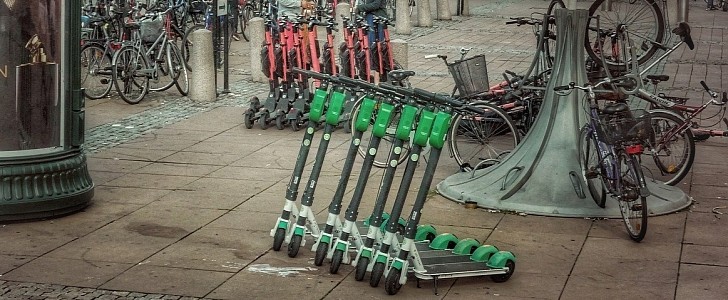Here is a brief but stark reminder that cops in Europe are very serious when it comes to the speed at which electric scooters are traveling on the roads and bike paths. We’re talking about standing scooters, the kind that you can also rent from a variety of micromobility, ride-sharing services.
U.S. legislation is far more permissive when it comes to electric two-wheelers, be they e-bikes, electric mopeds or electric scooters. In the European Union, e-bikes can’t travel faster than 25 kph (15.5 mph), while e-scooters are limited to just 20 kph (12.4 mph) in Norway.
Cops in Oslo, Norway, seized one e-scooter modded to go almost three times as fast: The Guardian reports that the arrest was made last week, when officers pulled over two riders on the suspicion of speeding. They found that one of the scooters had been modified and was now able to reach speeds of 58 kph (36 mph). The item was seized and the owner is facing prosecution, but the police didn’t say what charges could be brought against them.
As per the same report, the Norwegian Public Roads Administration is running a control program with the police, aimed to increase safety on the public roads. So, while it would be easy to assume that European authorities are out to suck all the fun out of electric two-wheelers, the issue at hand is safety.
Norway, much like other European cities and many cities in the U.S., is dealing with the problem of rented e-scooters, which are crowding / littering the pavements. With the rise in ride-sharing programs for e-scooters, the number of reported injuries has also boomed, either because the riders are too inexperienced or because of the reckless way in which they ride, which often includes speeding.
A recent initiative from the UK, which has only partially legalized e-scooters for public roads, aims to include “smart” e-scooters that turn themselves off the second you mount the pavement or ride them into heavy pedestrian traffic. These two-wheelers will only be legal for ride-sharing, not private ownership.
Cops in Oslo, Norway, seized one e-scooter modded to go almost three times as fast: The Guardian reports that the arrest was made last week, when officers pulled over two riders on the suspicion of speeding. They found that one of the scooters had been modified and was now able to reach speeds of 58 kph (36 mph). The item was seized and the owner is facing prosecution, but the police didn’t say what charges could be brought against them.
As per the same report, the Norwegian Public Roads Administration is running a control program with the police, aimed to increase safety on the public roads. So, while it would be easy to assume that European authorities are out to suck all the fun out of electric two-wheelers, the issue at hand is safety.
Norway, much like other European cities and many cities in the U.S., is dealing with the problem of rented e-scooters, which are crowding / littering the pavements. With the rise in ride-sharing programs for e-scooters, the number of reported injuries has also boomed, either because the riders are too inexperienced or because of the reckless way in which they ride, which often includes speeding.
A recent initiative from the UK, which has only partially legalized e-scooters for public roads, aims to include “smart” e-scooters that turn themselves off the second you mount the pavement or ride them into heavy pedestrian traffic. These two-wheelers will only be legal for ride-sharing, not private ownership.

